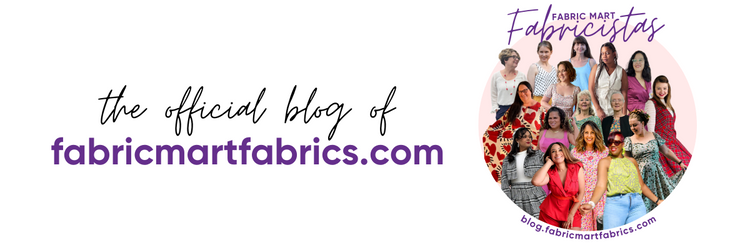In today's step, I will focus on inserting the elastic. Before you do this, be sure to attach the bodice to the skirt pieces, matching side seams and other markings. Use the waistline marking as your seam allowance. Then sew a second seam line 1/4 or so from the edge of the fabric, leaving an opening for you to insert the elastic. You've now created the elastic casing!
When first looking at this pattern, I didn't realize it had an elastic waistline. It actually made me happy because then any size adjustments can be altered with the elastic!
I had someone ask me in a previous step what elastic to use. There are a variety of different elastics out there, but two of the most common are woven and knit. Woven elastic is sturdy and knit elastic is softer. I used a woven elastic because that is what I had in my stash. (I keep a variety of different elastics on hand.) But if I had the option, I would probably pick a knit elastic because the knit I made the dress with is a lightweight knit. So I would say it is personal preference. When you start using wider elastics, you will notice a big difference between knit and woven. Then I would say that you should select one over the other depending on your project.
If you're new to sewing, maybe you've never inserted elastic into a garment. I use a safety pin to fish it through the casing. I have the safety pin "stitched" through the elastic so that the elastic does not bunch up on the pin as you fish it through. As I was fishing the elastic through, I couldn't get it through the pocket area very easily. Because of all the thicknesses of fabric, it was hard to pick the right slot. (It's hard to explain it until it happens, so I'm sure you will find this problem when you do it too!) I had to keep moving the safety pin backwards a few inches and then trying to guide it into another opening until finally the safety pin went through. So just watch for that as you go.
Now that you have the bodice and skirt sewn together and the elastic inserted, press the casing toward the bodice and top-stitch the casing to the bodice section. If you have a hard time doing this, no worries, you can cover it up with a belt!
That's it for today, pretty easy right? Next time we will work on the sleeves.
I know some of you have asked how long the sew-along will be and when the finished garment will be due to be entered to win a $50 gift certificate. I'm thinking we will wrap up with the sew-along late next week. Then I will be giving everyone two weeks from the last post date to finish the dress and submit it to be entered to win a gift certificate!







I didn't top stitch the casing to the bodice section. Mine seems to be staying in place pretty well. So far this dress has been pretty easy. I'm glad I lengthened the bodice, It fits just right.
ReplyDeleteGlad things argali things are working well for you ! It is an easy pattern! I could make a few in a weekend! My top stitching was sort of bunchy, so I felt like I should.,
DeleteI too use a safety pin to thread elastic through the casing. I make a mark on each end of the elastic so if it gets twisted while I am threading it through, I can match up the marks, before I sew it together.
ReplyDeleteGreat tip, thanks!
Delete